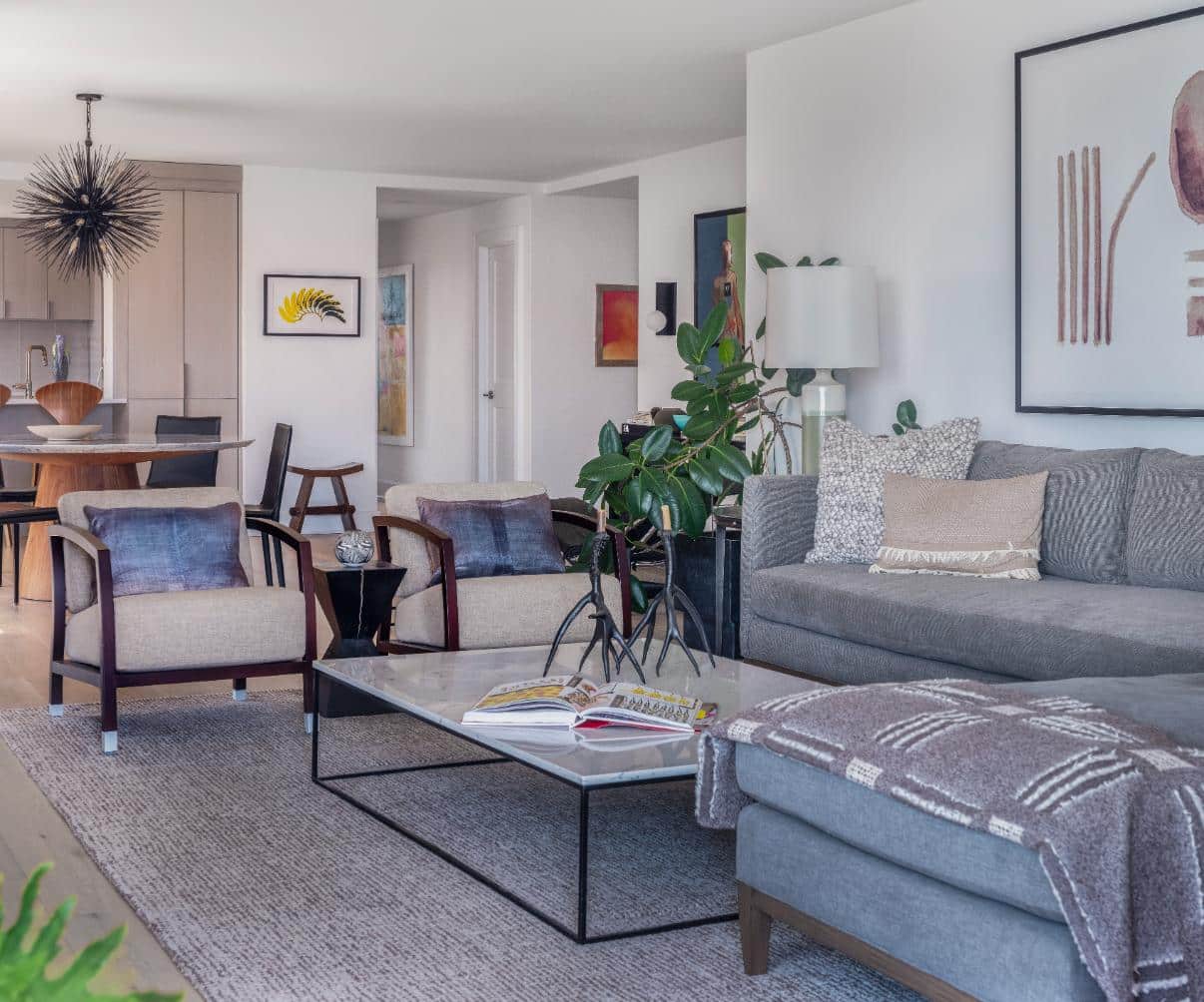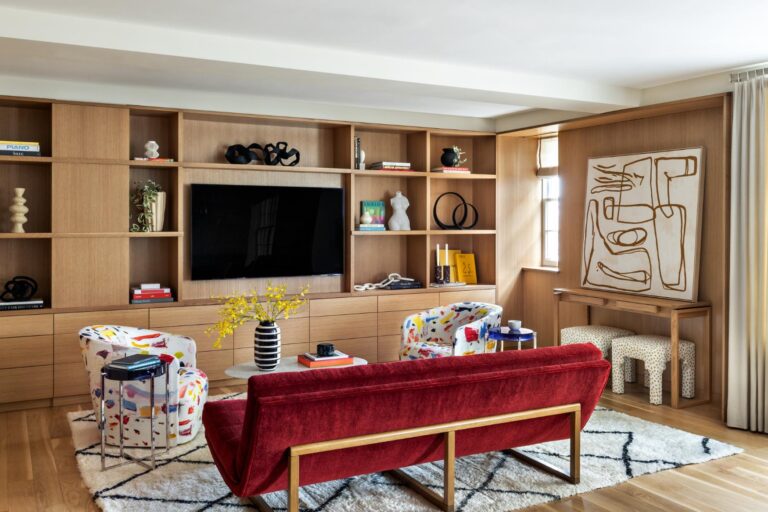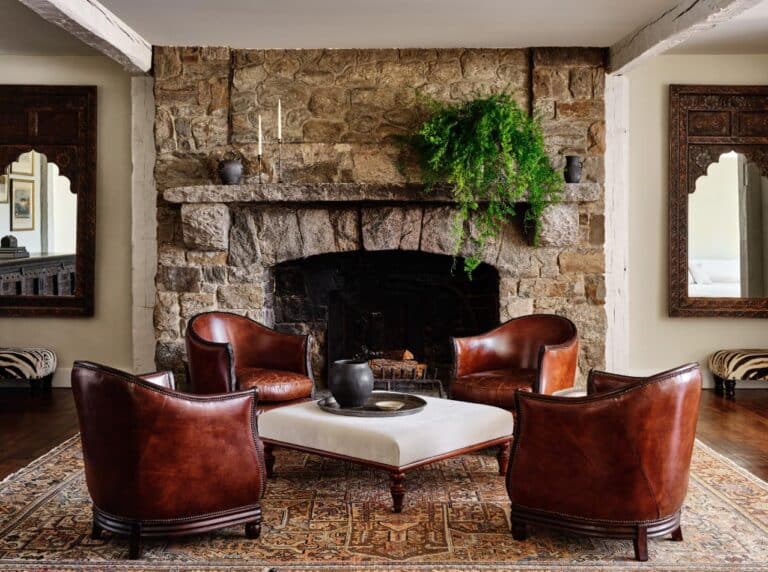Collecting things has always been a tricky pastime. Displayed poorly, a collection can make a home look cluttered or crowded. But done right, having a collection can be an enjoyable hobby, a wonderful conversation starter when hosting guests and an inspiring way to decorate your home. Antonio Pippo, founder and principal owner of Antonio Pippo Interiors, a full-service residential interior design firm based in Westchester County, NY, understands this and encourages his clients to come to him with a collection they want to incorporate into the design of their home. “I love to work with art collectors,” says Pippo. “The projects that have great art always end up being my favorites.” He shares a few insider secrets on how he transformed one client’s New Jersey beach home into a show-stopping gallery space.
Start with the Art
This particular collection was quite large and the art was “strong and bold,” says Pippo. While white walls often ensure the art stands out, the color scheme he selected was one with warmth and masculinity punctuated by blacks and calming neutrals to enhance the artwork. “I purposefully created layers that highlight the art while integrating it into the home,” he adds. For this beach home, Pippo began the design process by reviewing all the pieces in the collection to set the color scheme for each room and decide on a focal point for each space. For this particular collection, neutral furnishings frame each piece while décor accents play on pops of color from the art, like deep blue, bright yellow and calming green. “The furnishings absolutely need to be considered in conjunction with the collection,” affirms Pippo. “They go hand-in-hand and when done well, they make each other stronger.”
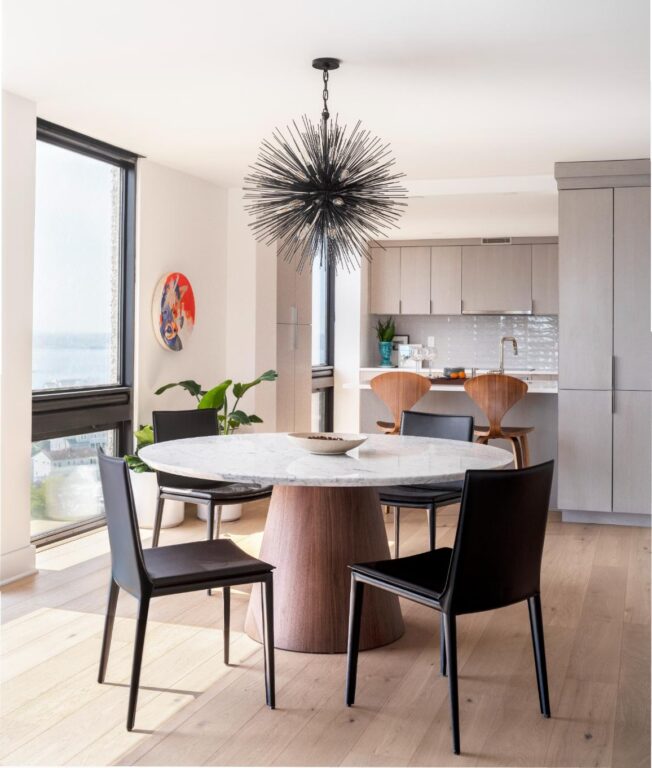
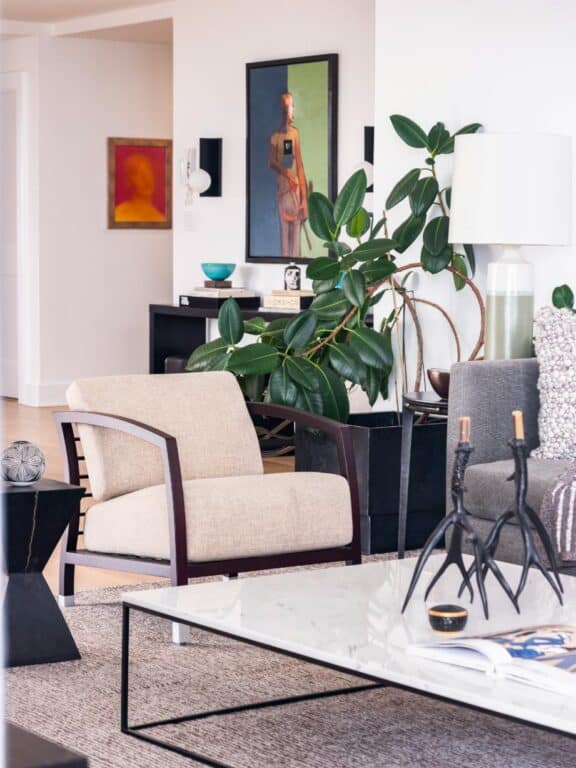
Be Selective
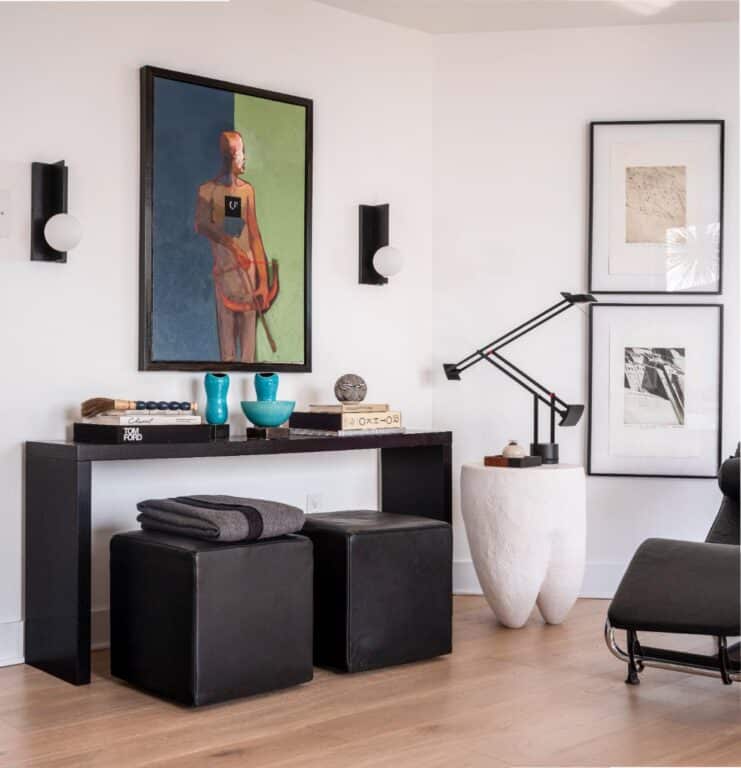
Even if you have many pieces to display, you don’t have to show them all. You don’t even have to love them all. Oftentimes when collecting, our tastes change, or we buy something on a whim or because we think we need to have every piece in a series. If you don’t like it, don’t keep it, advises Pippo. “At the very least, don’t give those pieces pride of place in your living room,” he adds. Visualize each piece with your furnishings and decide how it relates to the space. “It doesn’t have to match but it does have to have a synergy,” says Pippo. If it doesn’t, leave it in storage.
Curate Vignettes
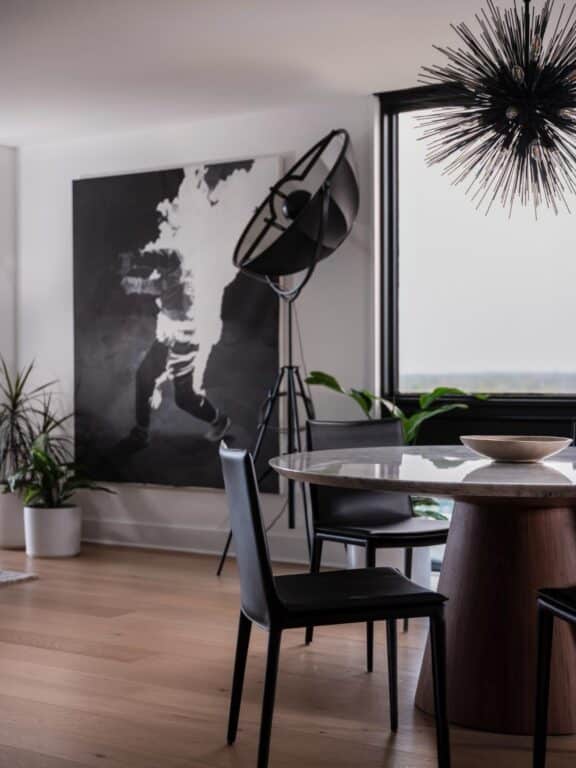

One of his tricks is to create vignettes to make the artwork feel more intentional and less scattered. “I love to curate vignettes of art throughout a home and elevate each piece to its highest potential,” says Pippo. To keep things interesting, these vignettes can change with the seasons, just like your décor. “The most interesting rooms are always evolving,” says Pippo. “When you take the time to curate your collection into a new vignette, it brings a refreshed appreciation to each piece. It also helps to cluster accessories into groups for added impact, and this often saves space as well.”
Consider Function
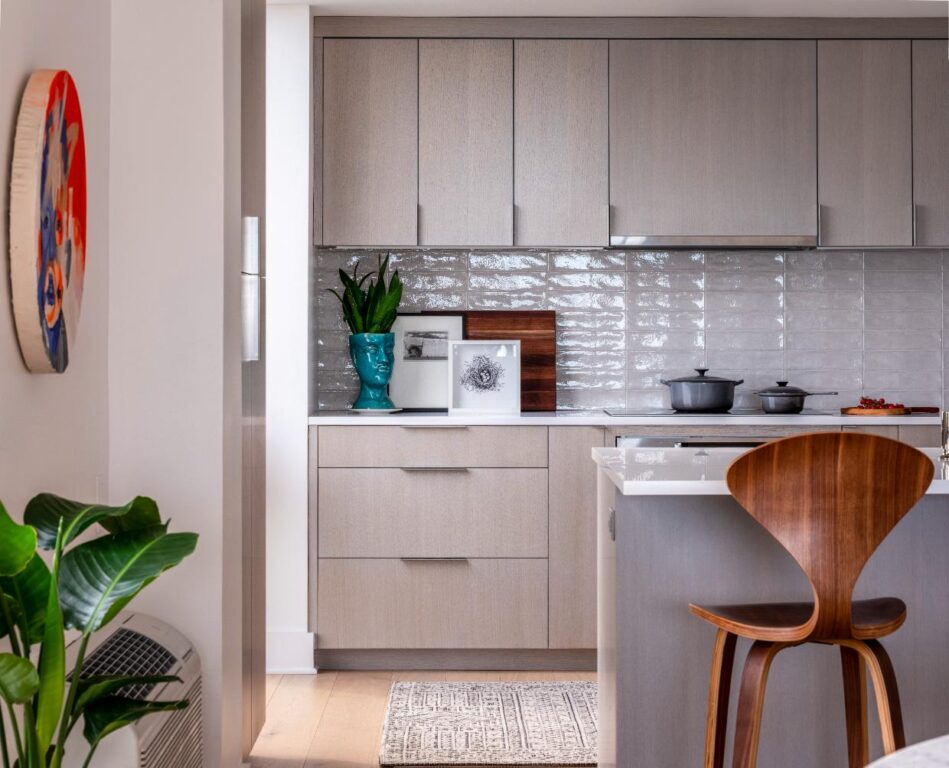
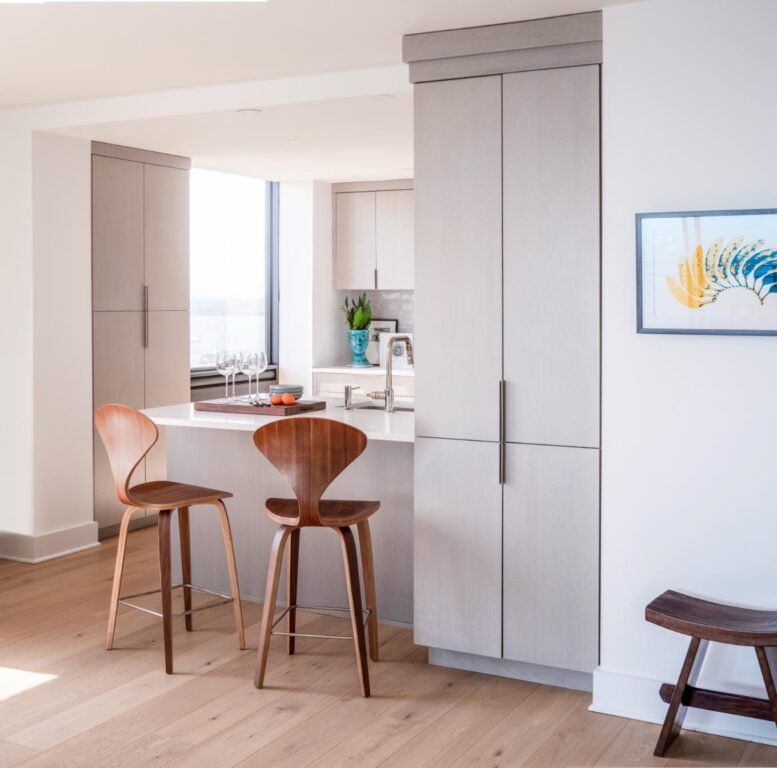
“I believe art belongs in every space,” says Pippo, who selected some of the pieces in his client’s collection to be displayed in the kitchen and the bathrooms. “If it’s unexpected, that just adds to the appeal.” That said, it’s best to protect your collection before you hang it. Seal any paintings before hanging them to protect them from moisture. When considering which items you’ll display in the kitchen or bath, select pieces that are easy to wipe down and clean. “Like with all things in interior design, it’s crucial to consider functionality,” adds Pippo.

